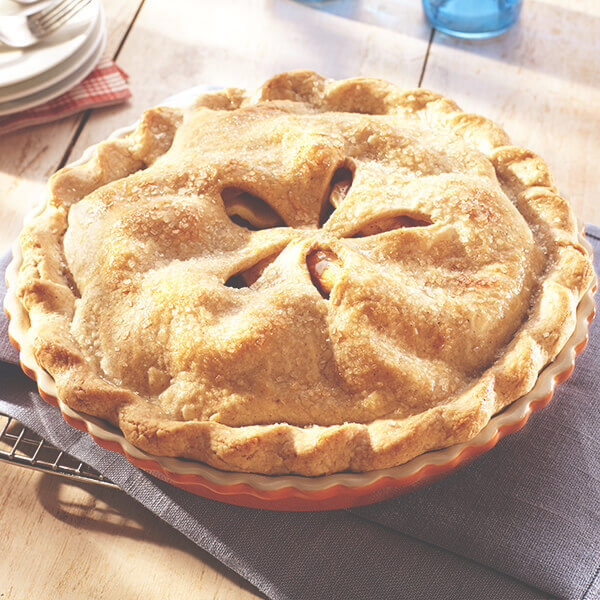Tags: csharp pi reverse
Rating:
# PIL
[Full (Combined) Writeup Here](https://gist.github.com/ThePuzzlemaker/4f3657489d8e8dad69652ad1de2b9dff)
## Description
Our team detected a suspicious image, and managed to get a code of some sort, and we think they are related.
Can you investigate this subject and see if you can give us more data?
## Hint
PIL = PI + IL
## Solution
Some ILCode is provided as well as a bitmap.

`source` (provided):
```
.class private auto ansi '<Module>'
{
} // end of class <Module>
.class private auto ansi beforefieldinit csharp.Program
extends [mscorlib]System.Object
{
// Fields
.field private static class [mscorlib]System.IO.FileStream piFile
// Methods
.method private hidebysig static
void Main (
string[] args
) cil managed
{
// Method begins at RVA 0x2050
// Code size 38 (0x26)
.maxstack 8
IL_0000: ldstr "one-million-digits.txt"
IL_0005: ldc.i4.3
IL_0006: ldc.i4.1
IL_0007: newobj instance void [mscorlib]System.IO.FileStream::.ctor(string, valuetype [mscorlib]System.IO.FileMode, valuetype [mscorlib]System.IO.FileAccess)
IL_000c: stsfld class [mscorlib]System.IO.FileStream csharp.Program::piFile
IL_0011: ldstr "original.bmp"
IL_0016: ldstr "result.bmp"
IL_001b: ldstr "<CENSORED>"
IL_0020: call void csharp.Program::Hide(string, string, string)
IL_0025: ret
} // end of method Program::Main
.method private hidebysig static
void Hide (
string srcPath,
string dstPath,
string secret
) cil managed
{
// Method begins at RVA 0x2078
// Code size 106 (0x6a)
.maxstack 5
.locals init (
[0] class [mscorlib]System.Collections.BitArray,
[1] uint8[],
[2] int32,
[3] int32,
[4] uint8,
[5] int32
)
IL_0000: call class [mscorlib]System.Text.Encoding [mscorlib]System.Text.Encoding::get_UTF8()
IL_0005: ldarg.2
IL_0006: callvirt instance uint8[] [mscorlib]System.Text.Encoding::GetBytes(string)
IL_000b: newobj instance void [mscorlib]System.Collections.BitArray::.ctor(uint8[])
IL_0010: stloc.0
IL_0011: ldarg.0
IL_0012: call uint8[] [mscorlib]System.IO.File::ReadAllBytes(string)
IL_0017: stloc.1
IL_0018: ldloc.1
IL_0019: ldc.i4.s 14
IL_001b: ldelem.u1
IL_001c: ldc.i4.s 14
IL_001e: add
IL_001f: stloc.2
IL_0020: ldc.i4.0
IL_0021: stloc.s 5
// sequence point: hidden
IL_0023: br.s IL_0058
// loop start (head: IL_0058)
IL_0025: ldloc.2
IL_0026: call int32 csharp.Program::GetNextPiDigit()
IL_002b: add
IL_002c: stloc.3
IL_002d: ldc.i4 254
IL_0032: ldloc.1
IL_0033: ldloc.3
IL_0034: ldelem.u1
IL_0035: and
IL_0036: conv.u1
IL_0037: stloc.s 4
IL_0039: ldloc.1
IL_003a: ldloc.3
IL_003b: ldloc.s 4
IL_003d: ldloc.0
IL_003e: ldloc.s 5
IL_0040: callvirt instance bool [mscorlib]System.Collections.BitArray::get_Item(int32)
IL_0045: call uint8 [mscorlib]System.Convert::ToByte(bool)
IL_004a: add
IL_004b: conv.u1
IL_004c: stelem.i1
IL_004d: ldloc.2
IL_004e: ldc.i4.s 10
IL_0050: add
IL_0051: stloc.2
IL_0052: ldloc.s 5
IL_0054: ldc.i4.1
IL_0055: add
IL_0056: stloc.s 5
IL_0058: ldloc.s 5
IL_005a: ldloc.0
IL_005b: callvirt instance int32 [mscorlib]System.Collections.BitArray::get_Length()
IL_0060: blt.s IL_0025
// end loop
IL_0062: ldarg.1
IL_0063: ldloc.1
IL_0064: call void [mscorlib]System.IO.File::WriteAllBytes(string, uint8[])
IL_0069: ret
} // end of method Program::Hide
.method private hidebysig static
int32 GetNextPiDigit () cil managed
{
// Method begins at RVA 0x20f0
// Code size 32 (0x20)
.maxstack 2
.locals init (
[0] int32
)
IL_0000: ldsfld class [mscorlib]System.IO.FileStream csharp.Program::piFile
IL_0005: callvirt instance int32 [mscorlib]System.IO.Stream::ReadByte()
IL_000a: stloc.0
IL_000b: ldloc.0
IL_000c: ldc.i4.s 10
IL_000e: bne.un.s IL_001b
IL_0010: ldsfld class [mscorlib]System.IO.FileStream csharp.Program::piFile
IL_0015: callvirt instance int32 [mscorlib]System.IO.Stream::ReadByte()
IL_001a: stloc.0
IL_001b: ldloc.0
IL_001c: ldc.i4.s 48
IL_001e: sub
IL_001f: ret
} // end of method Program::GetNextPiDigit
.method public hidebysig specialname rtspecialname
instance void .ctor () cil managed
{
// Method begins at RVA 0x211c
// Code size 7 (0x7)
.maxstack 8
IL_0000: ldarg.0
IL_0001: call instance void [mscorlib]System.Object::.ctor()
IL_0006: ret
} // end of method Program::.ctor
} // end of class csharp.Program
```
Now, you see, I'm terrible at ILCode, so I compiled it to a DLL:
`ilasm /output:test.dll /dll /debug source`
Then I used ILSpy (the cross-platform command-line version since I'm using Linux):
`ilspycmd test.dll > source.cs`
The source I got:
```csharp
using System;
using System.Collections;
using System.IO;
using System.Text;
namespace csharp
{
internal class Program
{
private static FileStream piFile;
private static void Main(string[] args)
{
piFile = new FileStream("one-million-digits.txt", FileMode.Open, FileAccess.Read);
Hide("original.bmp", "result.bmp", "<CENSORED>");
}
private static void Hide(string srcPath, string dstPath, string secret)
{
BitArray bitArray = new BitArray(Encoding.UTF8.GetBytes(secret));
byte[] array = File.ReadAllBytes(srcPath);
int num = array[14] + 14;
for (int i = 0; i < bitArray.Length; i++)
{
int num2 = num + GetNextPiDigit();
byte b = (byte)(0xFE & array[num2]);
array[num2] = (byte)(b + Convert.ToByte(bitArray[i]));
num += 10;
}
File.WriteAllBytes(dstPath, array);
}
private static int GetNextPiDigit()
{
int num = piFile.ReadByte();
if (num == 10)
{
num = piFile.ReadByte();
}
return num - 48;
}
}
}
```
The million digits of Pi start **after** the decimal point (e.g. `14159265...`). This was found out by asking the admins. Thanks admins, you're doing great!
The algorithm works like this (pseudocode):
```
Initial conditions:
* bitmap = OpenTheFile("original.bmp").ExtractItsBytesIntoAnArray(); // we aren't provided the original, but it's required to encode
* flag = ExtractBitsFrom("<INSERT FLAG HERE>");
* num = bitmap[14] + 14;
Algorithm:
* for every bitIndex in the flag,
* num2 = num + GetNextPiDigit();
* b = ClearLastBit(bitmap[num2]);
* bitmap[num2] = b + GetBitAsZeroOrOne(flag[i]);
* num = num + 10;
End of loop:
* OpenTheFile("result.bmp").WriteBytes(bitmap);
```
To decode this, you simply have to go use the same loop but replace these two instructions:
`b = ClearLastBit(bitmap[num2]);`
`bitmap[num2] = b + GetBitAsZeroOrOne(flag[i]);`
with some type of logic to set a bit in a character to 0 or 1.
Here's the script that I used for this:
(I had to use Python 2 cause it was complaining about non-UTF8 characters in `result.bmp`)
```python
with open("result.bmp", "r") as file:
bmp = file.read()
with open("pi.txt", "r") as file:
pi = file.read()
def getPi():
global cpi
cpi += 1
return int(pi[cpi-1])
cpi = 0
num = ord(bmp[14]) + 14
flagLst = ("a "*64).split(" ")
charNum = 0
for i in range(0, 64): # Going to 64 characters cause I don't know the length of the flag
for i2 in range(0, 8):
pin = getPi()
num2 = num + pin
charNum |= (0x01 & ord(bmp[num2])) << i2
# print("num : %d / pi : %d / num2 : %d / charNum : %s" % (num, pin, num2, bin(charNum))) # debugging
num += 10
# print(chr(charNum)) # debugging
flagLst[i] = chr(charNum)
charNum = 0
flag = "".join(flagLst)
print(flag)
```
Running this script got me:
```
hexCTF{l00k_wh0_l3arned_t0_sp34k_byt3c0de}F��c��u�Ѡ�Y��P,8/
```
That extra gibberish at the end is non-encoded characters, so you can just ignore that.
Extracting that first bit gets you the flag.
### Non-Provided References
`pi.txt` is simply a truncated (remove the first two characters, `3.`) version of [pi1000000.txt](https://www.angio.net/pi/digits/pi1000000.txt) from [angio.net](https://www.angio.net/pi/digits.html).